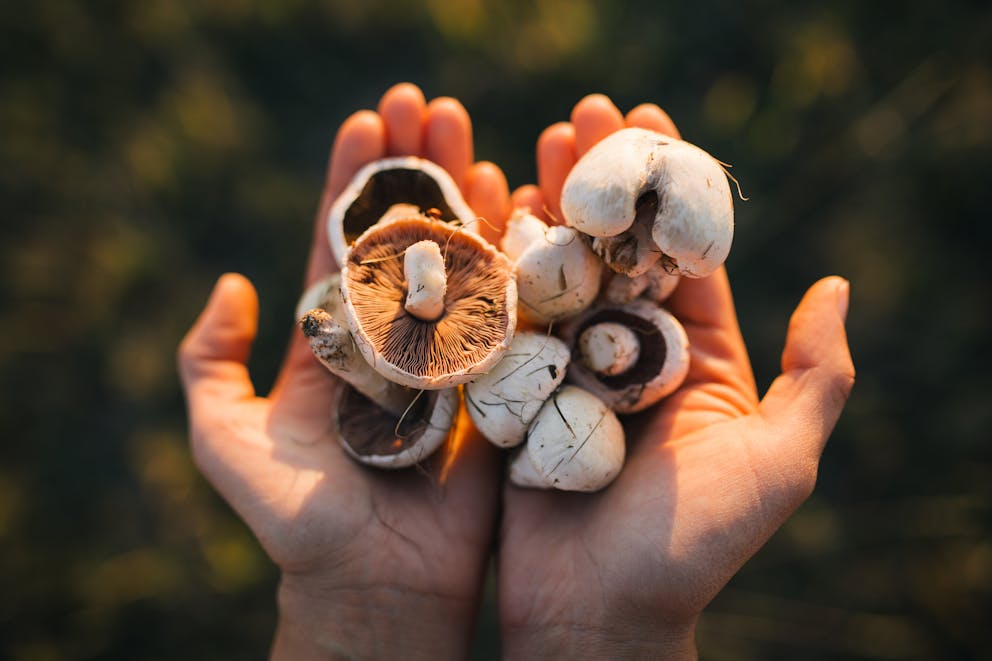6 Foods That Can Kill You
6 Foods That Can Kill You
Last week, I stumbled upon a dish that was almost my last—puffer fish sushi. Woah, the kind that can land you in a hospital bed if it hasn't cut just right.
It got me thinking about how often we flirt with danger at our dining tables without even realizing it. From exotic delicacies to seemingly harmless veggies in our pantry, some pretty lethal foods are out there.
I will walk you through some of these culinary landmines—like mushrooms that could be mistaken for your average dinner ingredient but pack a deadly punch or those baby octopuses that need more than good seasoning to be safe.
We'll even talk about why chomping on green potatoes is playing with fire and what lurking threats lie in raw chicken.
Remain here 'cause, by the conclusion of this lecture, you'll comprehend precisely which victuals may revolt and how to ensure they stay on your side of the platter—or even better, far away from it.
The Hidden Dangers of Puffer Fish Consumption
Imagine a dish so exclusive that chefs undergo years of training to prepare it. That's fugu for you, the Japanese delicacy that could turn dinner into your last meal if not handled with extreme care.
What makes this puffer fish a culinary gamble is tetrodotoxin, lurking in its liver and other organs.
Understanding Tetrodotoxin in Fugu
This potent neurotoxin doesn't mess around; it’s 1,200 times deadlier than cyanide. A mere pinch can stop your nerves from chatting with each other, leaving you paralyzed yet conscious till your last breath – not exactly my idea of a food coma.
So why risk it? Well, some thrill-seekers relish walking on the wild side of cuisine.
Chefs must slice with surgical precision to avoid unleashing the toxin. Only those certified dare tackle this underwater grenade, as one slip could lead to an unscheduled meeting with Davy Jones' locker—no pressure.

The Lethal Side of Mushrooms: Death Cap Dangers
Before you add that mushroom to your next meal, consider if it could be the deadly death cap. Hold up. It might be the notorious death cap, which packs enough punch to claim 90% of all mushroom-related fatalities worldwide.
Its secret weapon is alpha-amanitin, a toxin with no mercy.
Identifying Poisonous Mushrooms
Mushroom hunting can feel like an ancient treasure hunt, but mistaking a death cap for its edible look-alikes could write your final chapter. These deadly fungi are masters of disguise; they mimic harmless varieties so well that even experienced foragers get fooled.
To stay safe, remember these tricks: avoid mushrooms with white gills, a skirt or ring on the stem, and a bulbous or sack-like base called a volva—classic signs of the killer cap. Want more certainty?
Get educated on local species because what you don't know can hurt you when it comes to mushrooms.
Treatment Options for Mushroom Poisoning
Suppose someone has made the grave error of consuming this toxic fungus. In that case, speed is vital—the faster they get medical help from professionals familiar with such cases (and maybe some milk thistle), the better their chances at writing another day in their life story.
Korean Baby Octopus Preparation and Risks
Picture this: you're at a traditional Korean restaurant, the aroma of spices fills the air, and before you is a plate of baby octopus. It's not just any dish; it requires meticulous preparation to avoid turning dinner into an emergency room visit.
Yes, we’re talking about a choking hazard here—those tiny suction pads on the tentacles aren't messing around.
When prepared correctly, a Korean baby octopus can be a safe bet for an adventurous eater. But let's get real—if those little suckers aren’t handled with care, they could stick to your throat faster than gum on hot pavement.
That’s why chefs train like culinary ninjas to ensure each morsel is tender yet harmless. To sidestep trouble while savoring this delicacy, proper cooking techniques are essential.
The risk isn't just theoretical; improperly cooked baby octopus has been known to cling when swallowed because those suction cups are as stubborn as old bubblegum under a diner table.
The Toxicity of Green Potatoes
Think twice before you whip up those spuds chilling in your pantry a bit too long. That greenish tinge they're sporting? It's not a new variety—it's solanine and means business. Solanine is no wallflower; show up to the party with enough of this toxin, and you could be hurt.
Solanine doesn't mess around; if ingested in high doses, it can lead to serious health issues—even death. So, while Aunt Edna might brag about her iron stomach at family potlucks, even she wouldn't stand a chance against an overzealous helping of green potatoes.
You heard right: these seemingly innocent tubers can turn treacherous when they go rogue on us. And here’s the kicker—you'd need to consume quite the pile (think like an entire bag) for things to get lethal.
But why risk turning dinner into Russian roulette? It's time to toss them out when potatoes start looking more Hulk than wholesome.

Bacterial Threats in Raw Chicken
Ever wonder why your mom told you to wash your hands after touching raw chicken? She was on to something. You see, that plump bird could be a Trojan horse for bacteria like salmonella—a real party pooper.
.
Let's get the lowdown on salmonella. This bug means business, causing symptoms that drive you to the bathroom. And it’s not just about discomfort; we're talking severe health risks here. Salmonella from undercooked cluckers sends over 450 folks to meet their maker yearly.
Salmonella and Food Safety
Keeping these invisible critters at bay isn't rocket science—it's kitchen science. It starts with proper cooking: no pink-in-the-middle shenanigans allowed. Heat needs to reach all parts of the chicken—no exceptions—to send those bacteria packing.
But before even firing up the stove, prevent cross-contamination by treating raw poultry as radioactive material (okay, maybe that's an exaggeration). Separate cutting boards are a must-have, and don’t forget thorough hand-washing—you know the drill.
Taking these steps is vital because getting cozy with salmonella is one relationship you want to avoid.
The Cyanide Content in Common Fruits and Seeds
Did you know that the shiny red apple on your kitchen counter could hide a tiny trace of cyanide? That's right, folks – it's not just for spy movies. Certain common fruits and seeds have a sneaky side, packing small amounts of this notorious toxin.
Recognizing Cyanogenic Foods
Biting into an apple is no cause for alarm, but think again if you're snacking on the seeds inside. These little guys can release cyanide when chewed or digested.
And they're not alone; peach pits, pear seeds, apricot kernels, and bitter almonds also join this clandestine club.
If sweet cassava is more your style than sour apples, watch out there, too. It has enough cyanogen compounds to give pause. While these foods contain toxins, the actual risk comes from chronic consumption over time rather than an occasional nibble.
Measures to Reduce Cyanide Exposure
Luckily, we've got some tricks to stay safe while enjoying Mother Nature’s bounty. Crushing those bitter almonds before eating them helps reduce their toxicity by exposing enzymes that neutralize the poison—a process as simple as it sounds.
Cassava takes a bit more work: soaking and fermenting are key steps traditionally used to ensure dinner doesn't turn deadly. This may sound like food prep meets chemistry class, but it keeps things interesting in the kitchen.
Conclusion
Alright, let's wrap this up. Foods that can be deadly? Yeah, they're real and closer than you think. Pufferfish sushi is a gamble without an expert chef. Death cap mushrooms are no joke—90% of mushroom deaths come from them.
Treat every baby octopus dish respectfully; those suction cups don't mess around. Green potatoes aren’t your friend when they blush with solanine—that stuff’s toxic in high doses.
And hey, chicken should always hit the heat before it hits your plate unless you’re vying for salmonella roulette—a game nobody wins. Lastly, watch out for cyanide in fruit seeds—it’s there even if it's just a bitter bite.
You've got the lowdown now on these undercover kitchen hazards—keep them off your fork and stay safe!
Supporting Data
https://www.britannica.com/story/7-of-the-worlds-most-poisonous-mushrooms
https://news.ucsc.edu/2017/03/mitchell-todd-alumni-profile.html
https://www.ncbi.nlm.nih.gov/pmc/articles/PMC6086742/
Previous blog
The 1st Sign of a Methylcobalamin (B12) DeficiencyNext blog
The #1 Remedy for Heart Palpitations
Popular
08/21/2024
55.7K views
02/23/2025
46.8K views
11/18/2024
281.2K views
03/18/2024
11/21/2022




